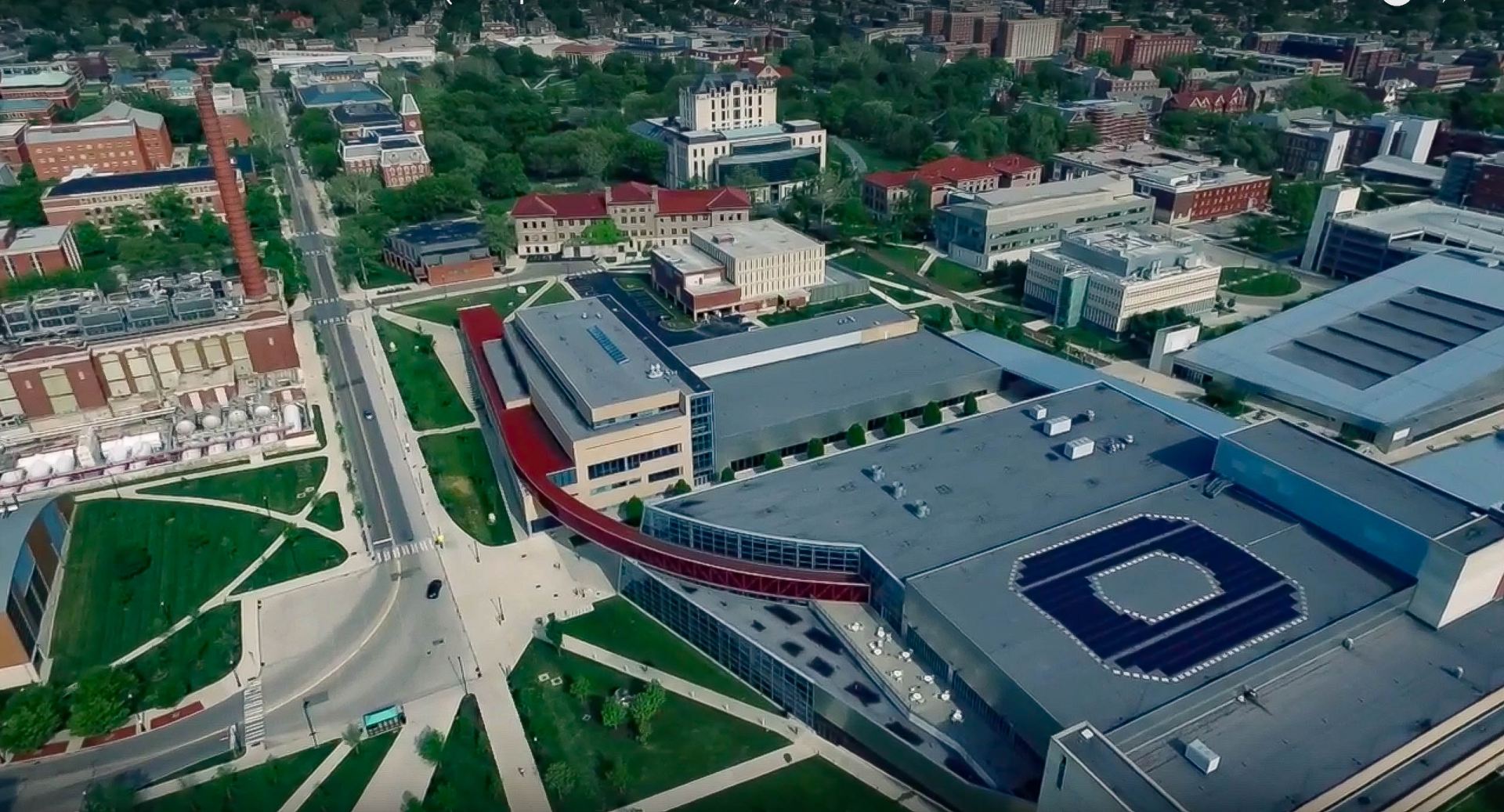
On top of the RPAC sits a Block “O” made of solar panels. Installed in 2014 in collaboration with AEP, the panels produce nearly 116,000 kilowatt-hours of energy per year. Credit: Jack Westerheide | Photo Editor
Ohio State is aiming to make a local impact on the global problem of climate change by joining the newly created University Climate Change Coalition (UC3).
UC3 is a group of 13 North American research universities that will work together with their respective communities to achieve climate goals and push for a “low-carbon future.” Every member of UC3 has pledged to reduce their institutional carbon footprints in many ways, like making climate-friendly investments to becoming carbon-neutral.
The university’s membership in UC3 furthers its climate-change mission that was already in place through its strategic sustainability goals, which were established in 2015. In three years, Ohio State has reduced its emissions by almost 5 percent, according to the press release announcing the university’s participation in the coalition.
“Ohio State is deeply committed to reducing our carbon footprint and promoting energy efficiency,” University President Michael Drake said in the release. “Our participation in UC3 significantly advances several long-term sustainability goals, including the university’s commitment to achieve carbon neutrality by 2050. As a flagship public research university, we are leveraging our resources to explore cleaner energy sources and solve sustainability challenges in Ohio and around the world.”
Drake has said the university’s goals include making campus more efficient by lowering energy consumption by 25 percent by the year 2025.
Ohio State Energy Partners, the entity created when the university privatized its energy systems for more than $1 billion with French energy producer Engie, will begin installing LED lights in 51 campus buildings as part of its first phase of conservation efforts.
The buildings include Ohio Stadium, Independence Hall and University Hall, among others. The long-term plan is to modernize and improve all 485 buildings on campus.
Ohio State was invited to join the coalition because it is one of the largest research universities in the country, said Gina Langen, a spokeswoman for the Office of Energy and Environment at Ohio State.
The major goals of the coalition are to continue to do the “outstanding” climate research that is already being done at the universities, while also spreading awareness to local communities, Langen said.
“I think there are ways that all of these universities can look at their particular problems, then come together and really lay out some methods for protecting all of us from the problems with climate change,” Langen said.
For instance, Ohio State, with a student body of more than 60,000 on campus, strives to find alternatives to simply throwing away trash or adding to landfills by incorporating recycling initiatives in order to become a zero-waste campus.
Two of the biggest ways Ohio State sees itself playing a role in the coalition is with its research at the Center for Automotive Research and the Byrd Polar and Climate Research Center, Langen said. Ohio State also will hold events to highlight its dedication to climate change.
“The areas where people have taken notice are in transportation,” she said. “Certainly, we do a lot of alternative transportation studies at the Center for Automotive Research. The Byrd Polar and Climate Research Center on West Campus is internationally known for its climate change research as well as its ice core sampling that has been going on for 50 years. Those are the two that spring to the top, but we have many laboratories that are doing very impressive climate change research.”
Ohio State is planning a two-day climate-change awareness event on May 18 that will showcase new research and feature a community technology and science festival on Ohio State’s West Campus. Also, a coalition-wide report of the best practices, policies and recommendations from all participating universities is planned to be released in late 2018.


